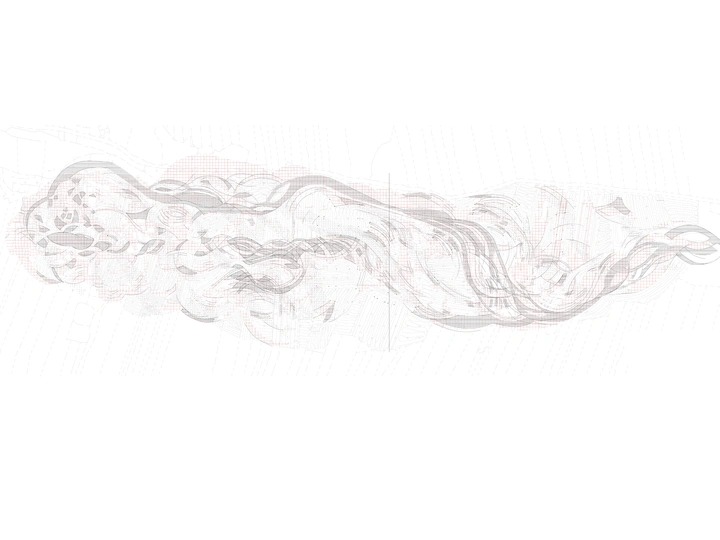River Tracing: Providing Land for Water Events

Architect and Landscape architect graduated from Oslo School of Architecture in 2023, with the diploma, "River Tracing", proposing an accumulating coopperative planning of landscape through scales to handle flooding and future water events in the riverways of the Norwegian mountain landscapes.The project were nominated as best landscape diploma of AHO 2023, and published in the journal of KOTE vers.18.
In 2022 I graduated as Architecht from Bergen School of Architecture. My diploma project; Ilinger, investigated how the natural proccesess and spaces of a riverscape in Hemsedal (Norway) can become tools for design. The project proposes architecture generated from landscapes, reflecting and participating in processes and spatial experiences of a riverscape.
In 2021, I exhibited the project "Deep Sea Architecture" at Lisbon Architecture Triennale/ Terra, togehter with Katarina Kierulf and Bastian Haukefær, and was shortlisted/ included in the 7 finalists for the 6th edition of the
Lisbon Triennale Millennium bcp Universities Competition Award.
I have an interest for rivers and water, its forces and wayes, and how we, as landscape architects, design with water facing the future climate with extreme weather and floods. In many cases it seems like water, as a main design element, becomes anchered within landscape projects with spesific sizes and shapes , ”statically” connected to the scale of the project. I have interests for how we might approach water as a phenomonon or process. If we relate to water as a phenomenon, without scale, with always changing appearence, how can design follow?
Im skilled in researching and interpreting ideas through digital and physical media, challenging the act of drawing and the representation of water. By changing how we visually represent water, we might also change our way of design. This will hopefully work as a preparation for future water events and engage awarness of the always presence of water.
The project, River Tracing, proposes an accumulating coopperative planning of landscape through scales to handle flooding and future water events in the riverways of the Norwegian mountain landscapes, based on the logic of water and topograhy. The project is situated in the valley of Hemsedal, placed on the beginning of Drammen Watershed.
The project challenge the act of separation of land and water. This seperation”line” has come into sharp focus during extreme floods, with proposals of walls, natural defenses and recomendations for retreat. These responses raise questions on where this line is drawn, but also on the separation that this line facilitates. Is this separation found in nature or does nature follow from its assertion?
The mode of research and design in the River Tracing project investigates how methods combining art and science, grounded in the physical conditions of a site, have relevance for contemporary landscape theory and practice, facing the future climate. Tracings of digital wateraccumulations, are challenging how we relate to and design with water as a dynamic element.
The documents of tracings question the common perceptions and representation of landscapes and water. In some cases, landscape designers, seem to frame landscapes, rivers and water into a suitable states. Water as a main element becomes anchered within the project with spesific size and shape, ”statically” connected to the scale of the project. If we relate to water as a phenomenon, without scale, with always changing appearence, how can design follow? Through tracings the project proposes a landscape able to take the forces of water, and still stand. This becomes a lansdcape we can enter and preserve as meaningful, where the river as a dynamic element becomes visible and preformative, leaving reminders and traces of its forces and wayes.
Hopefully, these methods of design could be relevant to other areas, with different climatic conditions.